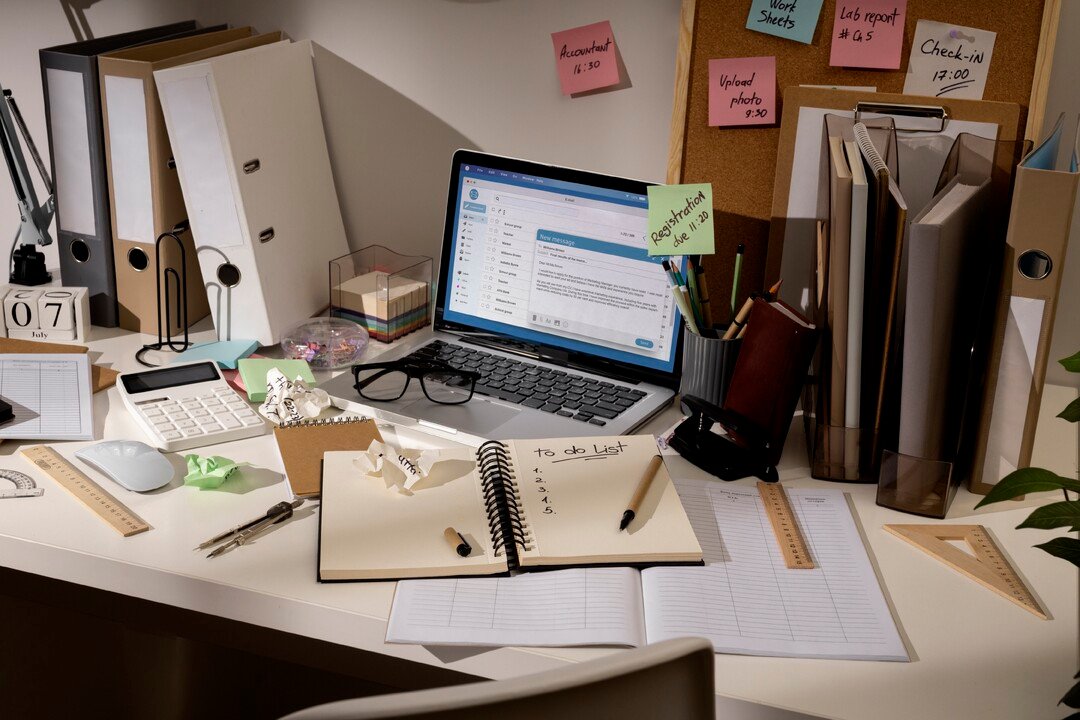Being organized isn’t about being perfect—it’s about creating systems that simplify your life. Whether you struggle with clutter, missed deadlines, or feeling overwhelmed, the right organization strategies can restore your clarity, boost your productivity, and even improve your mood.
Here are practical, real-world techniques you can start using today to get—and stay—organized.
Why Organization Matters
Organization impacts more than just your physical space. It also affects:
- Your mental clarity and ability to focus
- Your time management and daily workflow
- Your stress levels and decision-making
- Your confidence and follow-through on goals
Let’s explore how to build an organizational system that’s sustainable and actually works for your life.
1. Start With a “Brain Dump”
When your mind feels cluttered, start by writing everything down:
- Tasks
- Appointments
- Ideas
- Worries
- Errands
This clears mental space and gives you a concrete list to work from. Once it’s out of your head, you can begin prioritizing.
2. Use the “One Home for Everything” Rule
Everything you own should have one designated place. This reduces time spent searching for items and keeps clutter from building up.
Example:
- Keys always go in a tray by the door
- Chargers go in a drawer in your desk
- Bills are filed in a labeled folder
No more “Where did I put that?” moments.
3. Plan Your Week on Sunday
Use Sunday as a planning day to look ahead. Block out:
- Work hours and meetings
- Errands and personal commitments
- Meal planning and grocery runs
- Time for rest and hobbies
When you begin your week with a plan, everything flows smoother.
4. Use a “2-Minute Reset” Rule
Each time you finish using something, take 2 minutes to return it to its place. This prevents clutter from piling up and reduces cleaning time later.
It’s a small habit with a big impact.
5. Embrace Digital Tools That Fit Your Style
There’s no one-size-fits-all approach. Try:
- Trello or Notion for organizing projects
- Todoist or Microsoft To Do for daily task lists
- Google Calendar for scheduling time blocks
Choose one system and stick with it—too many apps can create more chaos.
6. Create “Zones” in Your Home or Workspace
Organize spaces by function:
- A drawer for tech gear
- A basket for incoming mail
- A shelf for work documents
- A bin for workout gear
This makes cleaning faster and helps everyone know where things belong.
7. Use the “One-In, One-Out” Rule
Whenever you bring something new into your space, let go of something old. This applies to clothes, gadgets, tools—everything.
It helps prevent accumulation and keeps your space intentional.
8. Set Up a Weekly Reset Routine
Choose one day each week (Sunday evening works well) to reset:
- Clean your workspace
- Empty your email inbox
- Organize loose papers or files
- Review your calendar and priorities
This weekly habit keeps things from spiraling out of control.
9. Color-Code for Quick Access
Use color to visually separate tasks, folders, or categories:
- Green for finances
- Red for urgent items
- Blue for personal or family
- Yellow for appointments or reminders
Color coding works especially well for visual learners.
10. Don’t Aim for Perfection—Aim for Progress
The goal of organization is to support your life, not control it. Be kind to yourself on days when things fall apart.
Just return to your systems the next day and keep moving forward.
Systems That Support, Not Stress
The best organization systems are the ones you can stick with consistently. Choose the techniques that match your lifestyle, not just what looks good on Pinterest.
When organization becomes a habit—not a project—you’ll feel more focused, more capable, and less overwhelmed by the day-to-day.

Deixe um comentário